What is the Peacock Swirl?
The Peacock (also called Bouquet) swirl was created around the end of the 18th century as a paper marbling technique. The pattern resembles the plumage of a male peacock or a bouquet of flowers. I first saw it on marbled paper from Paper Mojo and immediately thought of soap. Although it looks a bit difficult, it is really easy to make as long as you have the right tools.
You will need a slow moving soap recipe!
Temps: Keep temps low – 90-100 °F
Oils: Use a high percentage of oils that are slow to trace. Usually unsaturated fats are slower moving and include oils such as olive, almond, avocado, rice bran…etc. Olive oil is great because it is a slow moving soft oil but cures rock hard. Use smaller percentages of harder oils, butters and castor oil.
Water: Using a higher amount of water can help to slow down trace. However, if you have a recipe with high amounts of olive oil, you don’t need to use full water. I typically use 2 times my lye amount for water.
Fragrance oils: Use oils that are slow to trace. Stay away from spices and florals. My go-to fragrance oil when I attempt a new swirl in Energy from Bramble Berry.
Peacock Swirl Recipe
- Coconut oil – 30 oz
- Shea butter – 6 oz
- Olive oil – 30 oz
- Rice bran oil – 8 oz
- Avocado oil – 8 oz
- Castor oil – 4 oz
- Sodium hydroxide – 12.3 oz
- Water – 24 oz
Supplies
- Slab mold – 18 Bar Birchwood Mold from Bramble Berry
- Squirt bottles – Restaurant Supply Store
- Roller picks – Beauty Supply Store
- Cardboard or note card
- Chopstick
- Mica – Peacock Blue, Ruby Red and any white mica from the Conservatorie, black charcoal from Bramble Berry
- Litsea essential oil – Or any other slow moving fragrance or essential oil (follow usage guidelines from your supplier)
Emulsion versus Trace – Check out our newest article here!
Emulsion is when you have mixed your oils with your lye solution until your mixture appears homogenous. We look for a stable emulsion in that if you pause for a second or two…it does not separate out. It stays emulsified. You should not have any oil floating on top and your soap batter should be consistently creamy in appearance. Depending on your oils it should still be quite thin.
Trace is when a mark made on the surface of the soap remains or when soap drizzled on top of the surface remains for a noticeable amount of time before falling back into the mixture.
For this advanced swirl, we want to make sure our soap is at a steady emulsion but not quite to trace as traced soap can be too thick for swirling.
Building a raking tool for the swirl
You can easily create a raking tool for the peacock swirl by using roller hair picks and cardboard or an index card. Simply fold an index card and pierce holes using a large needle about 10-12 mm apart. Insert the picks as shown and you are ready to roll! The great thing about making your own is that you can make your comb the length of your mold so you are only making one single swipe with the tool.
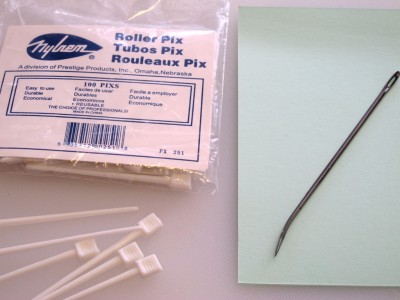
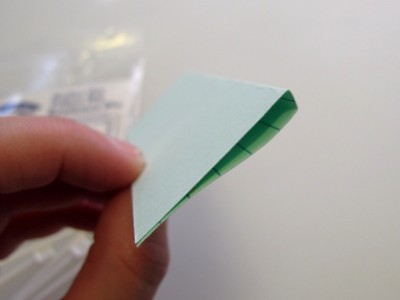

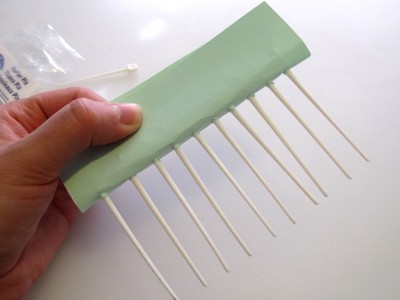
You’ll need a slab mold to swirl in. I’m using Bramble Berry’s 18 bar Baltic Birch Slab with the new silicone liner. This mold is an absolute dream to soap with. No lining. Perfect.
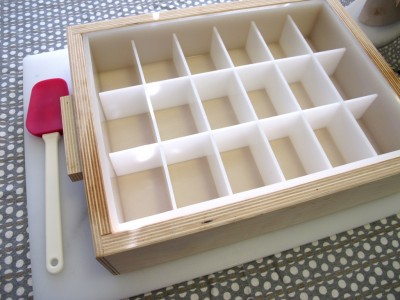
The process:
Be sure to gear up in goggles and gloves when handling the lye.
Make your soap mixture as usual. Keep an eye on the temps and when both the oil and lye are around 90-100°F it is time to make our peacock proudly! Mix your soap until you have a steady emulsion. You don’t want to see trace or you might not have enough time to color and design the soap. Look for a consistent color and no oil streaks or floating oils.
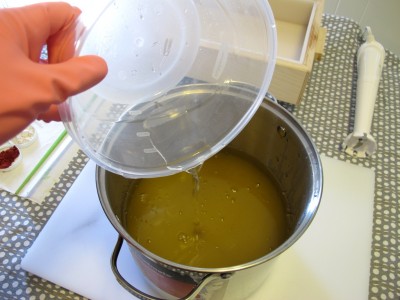
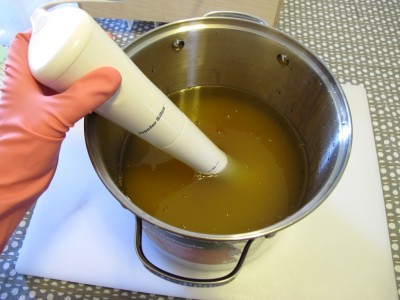

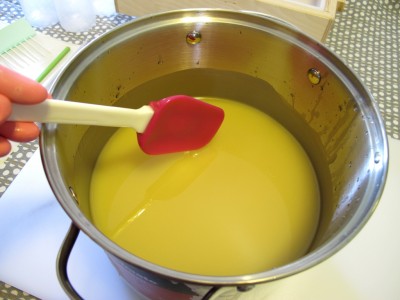
Once at emulsion, pour some of the soap into squirt bottles. Add about 2-3 teaspoons of color to each bottle. It will vary depending on your colorant. Use more or less depending on the color you are trying to get.

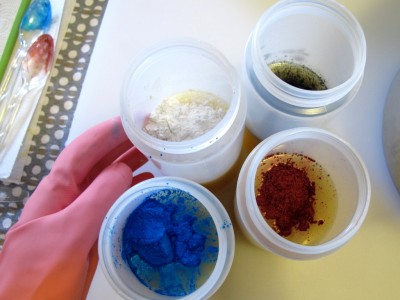
Micas usually mix into soap on their own. If you are using oxides, ultramarines or clays, then you might want to mix with glycerin or oil before adding them to the soap.
Mix the squirt bottles well. You can have as much colored soap as you want. I did about 10 oz each.
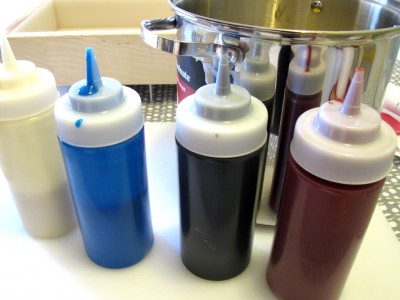
Pour in your base of uncolored soap. If you want color all the way through the soap then start layering from the bottom up. If this is your first time doing the design, then I suggest pouring a base and then squirting colors on top as it’s faster.
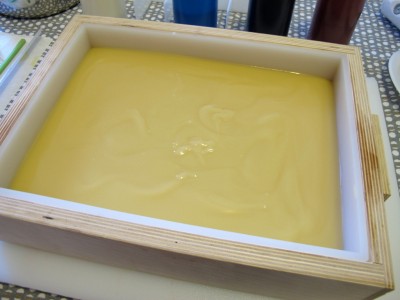
Lay on the colored soap in straight lines, all going the same direction. Keep layering until you run out of colored soap. Be sure that your top layer has a bit of each color and has plenty of contrasting lines (dark and light).
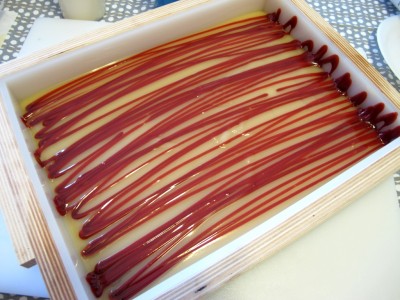
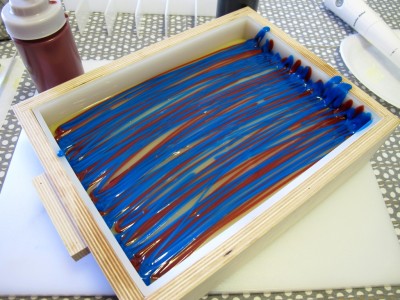
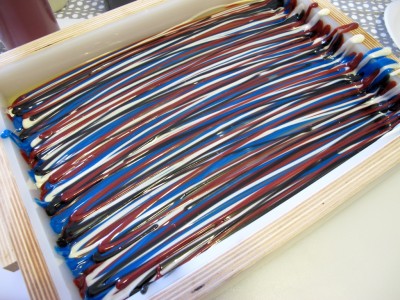
*Please note that you don’t have to use squirt bottles but it does help with a crisper design.
Using the raking tool, rake the soap breaking through the lines as shown.
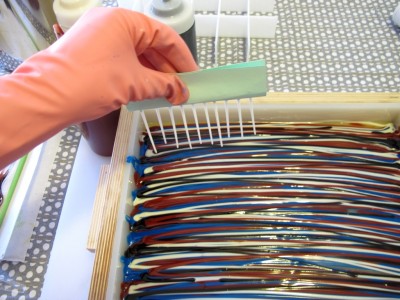
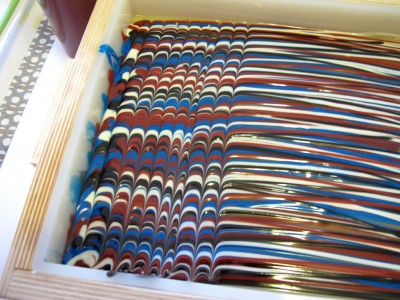
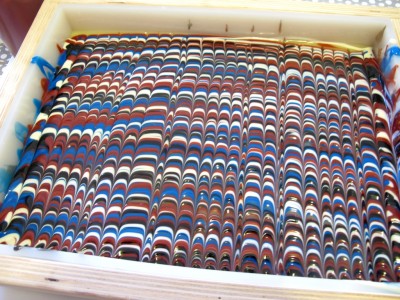
Beautiful! This is actually called a nonpareil swirl. It’s beautiful by itself but there is one more step to turn it into a peacock or bouquet swirl.
Next you will use a chopstick or skewer to make the peacock design as shown below.
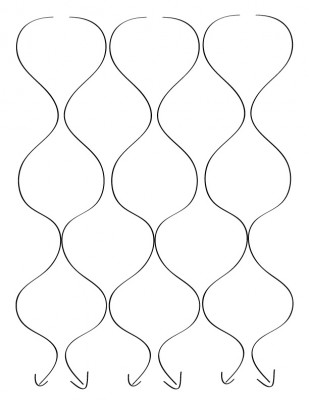
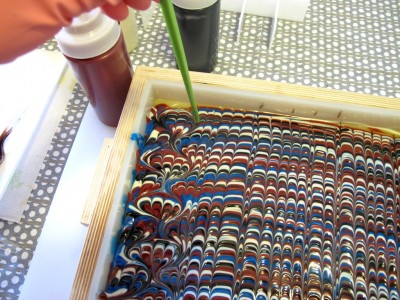
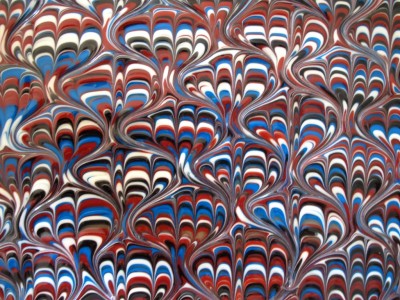
Beautiful!
Wait until the soap has firmed up a bit (about 10 minutes) and spray with alcohol from a fine mist sprayer. This helps combat ash from forming. Repeat in 30 minutes and again in 1 hour.
Unmold and cut your soap after 48 hours. Let cure as usual for 4-6 weeks.
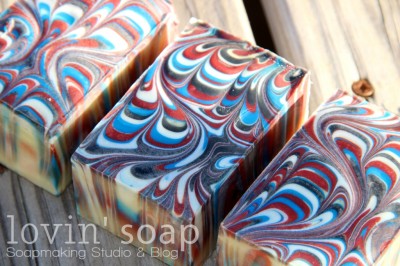
Happy (Peacock Swirl) Soaping!
Amanda Aaron
Grab our new eCourse, Swirling Success!
Learn to control trace, so it doesn’t control you!
This detailed video training explores the difference between emulsion and trace, so you know when to stop mixing your soap, allowing enough time to color and execute intricate designs. You’ll leave the eClass with a greater understanding of how water/liquid, temperatures, base oils, fragrance oils, essential oils and additives all affect the movement of your soap to trace.
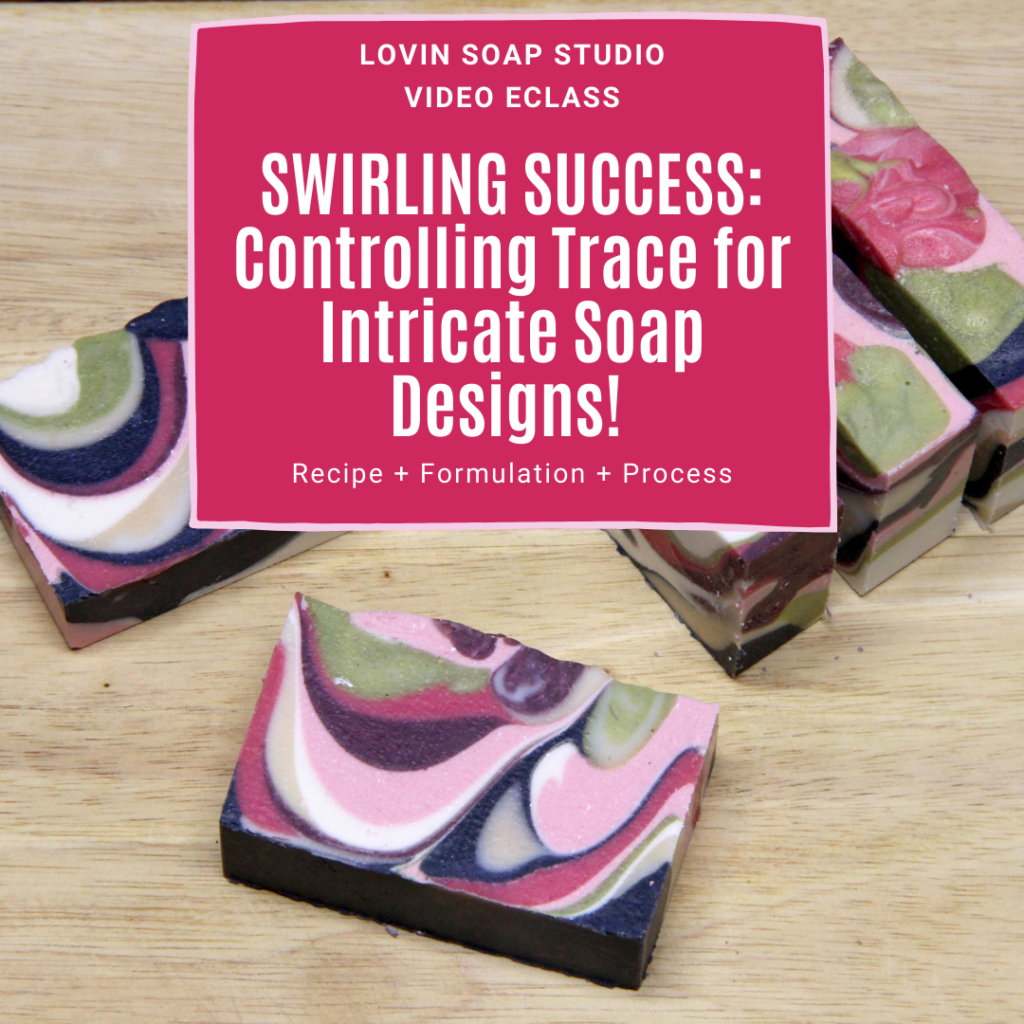

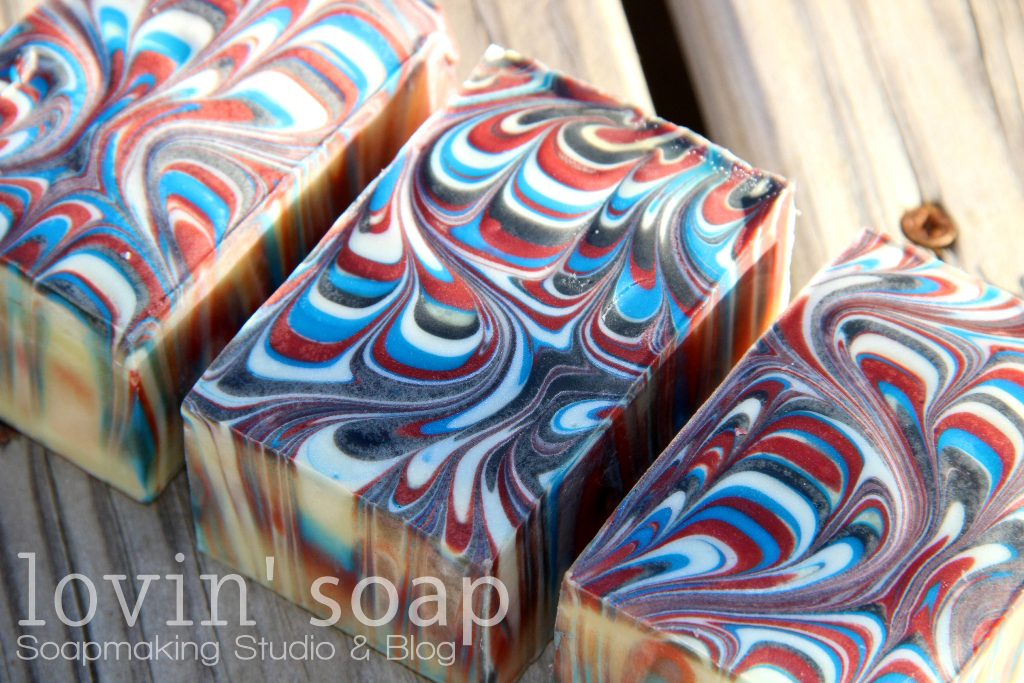
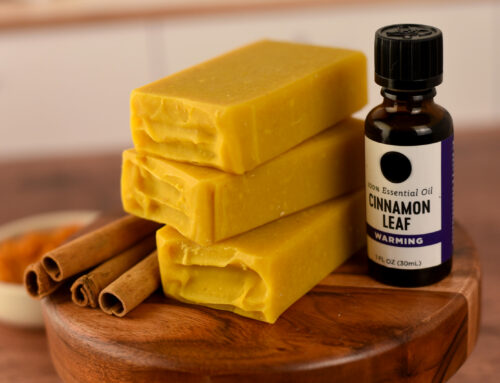
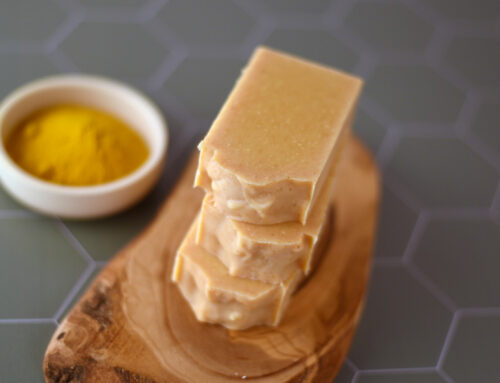
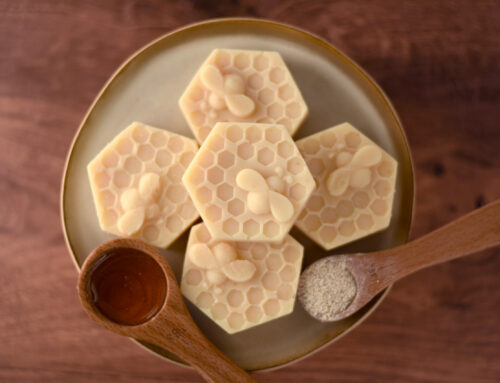
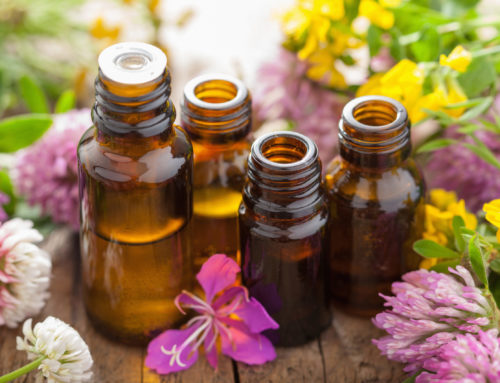

Love this!
I feel like it would be easier just to use a wide tooth hair pick, instead of making one.
Did you use the dividers for your mold or cut them by hand?
This soap is one of the most beautiful swirls I have seen until now.
Love the colors. Big WOW and greetings from Germany.
Britta
bodyandsoap.de
Just curious why is soapmaker would take a water discount I’ve tried to do some research and cannot really find a good valid answer I noticed your recipes have a little bit of a water discount thanks in advance.
Sorry about the typo above using my phone. Correction…Why a soapmaker
Hi Robin – the less water you use, the less water needs to evaporate from your final soap so you’ll have a harder bar when unmolding and bit of a shorter cure time. Some people claim that it cuts down on soda ash but I haven’t found that to be the case.
Hi,
I’m new in the cold process and have found your website amazing, with plenty of recipes and new gr8 ideias. I’ll share it in my blog. And please feel free to visit my online store of Soaps from Brazil at: http://loja.fabricadearomas.com.br
Hi, will this work with MP base? I’m new to soap making and haven’t learnt making soap from scratch. Was hoping to try this out using MP base soap first but not sure if it’s possible? Thanks!
It would set up too fast but you can swirl in the mold with mp but never like this.
Do you think that if I used cocoa butter instead of Shea butter that it would work as well staying runny for longer? (I know I’d have to run it back through a lye calc).
Hi Amenda, i just want to compleiment u on this wonderful art work it looked pretty and well explainn i will tried it thanks weel done kemah
Super gorgeous!! Did you insulate the batch between the sprays of alcohol?
OMG, it’s absolutely stunning! Those colors are perfect for a Peacock Swirl. Congrats again on the being in the Saponifier Magazine — you deserve it!
Congratulations on being published in the Saponifier, .Amanda! Thanks for sharing. Your directions are so easy to understand! I love the red, white and blue. Can’t wait to try this!
Thanks share ,Love it
Thank you so much for this tuitorial, I love the red, white & blue. I like your squirt bottles and the fact that they are wide mouth ones, that would make them much easier to clean. Where can we purchase that type of bottles?
Hi Margo! I got them from a restaurant supply store in town called Ace-Mart.
Amazon too
Great looking soap with a great instructions. Do you know if the use of Olive nad Palm Kernel would reach trace/ God bless and happy soaping!
I have always admired these wonderful swirly soaps, but never thought I could accomplish it, but you have given such clear instructions, I am going to give it a try
Thanks for posting this, it is much appreciated.
Gorgeous! The colours are really nice and you managed beautiful swirls!